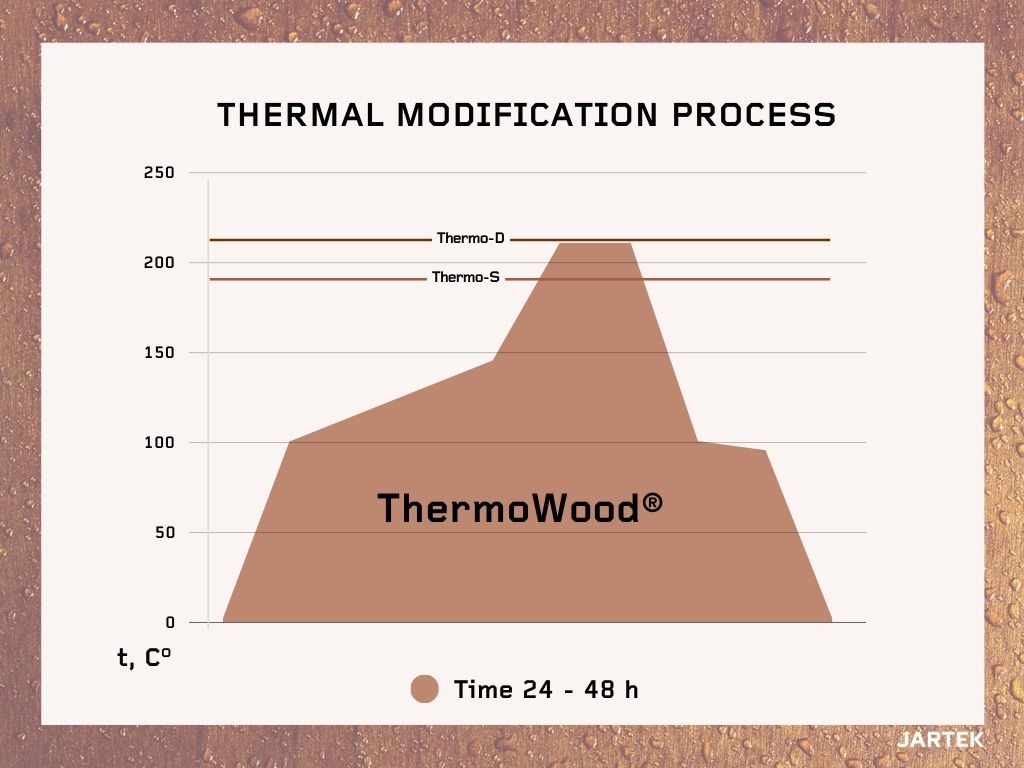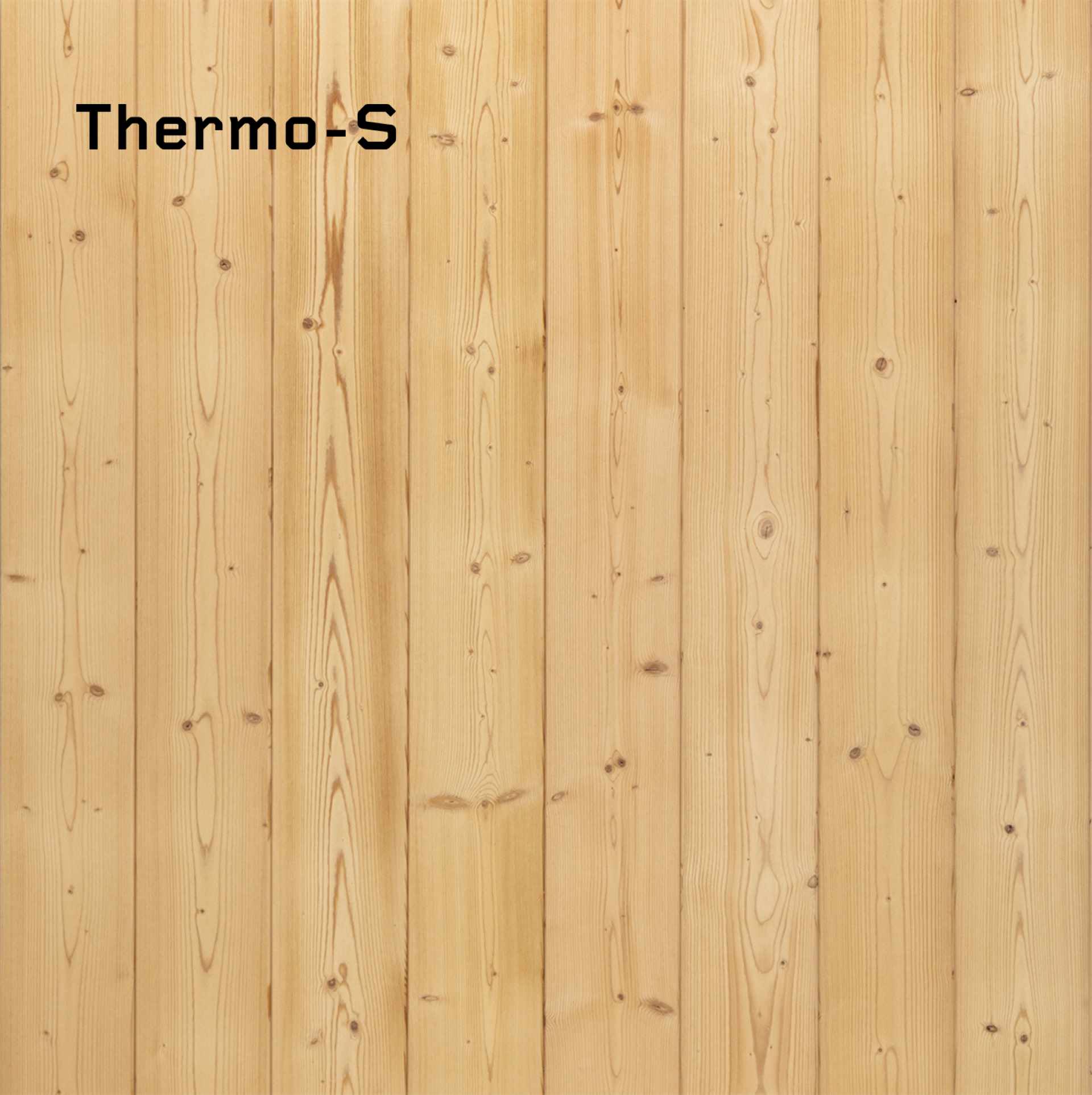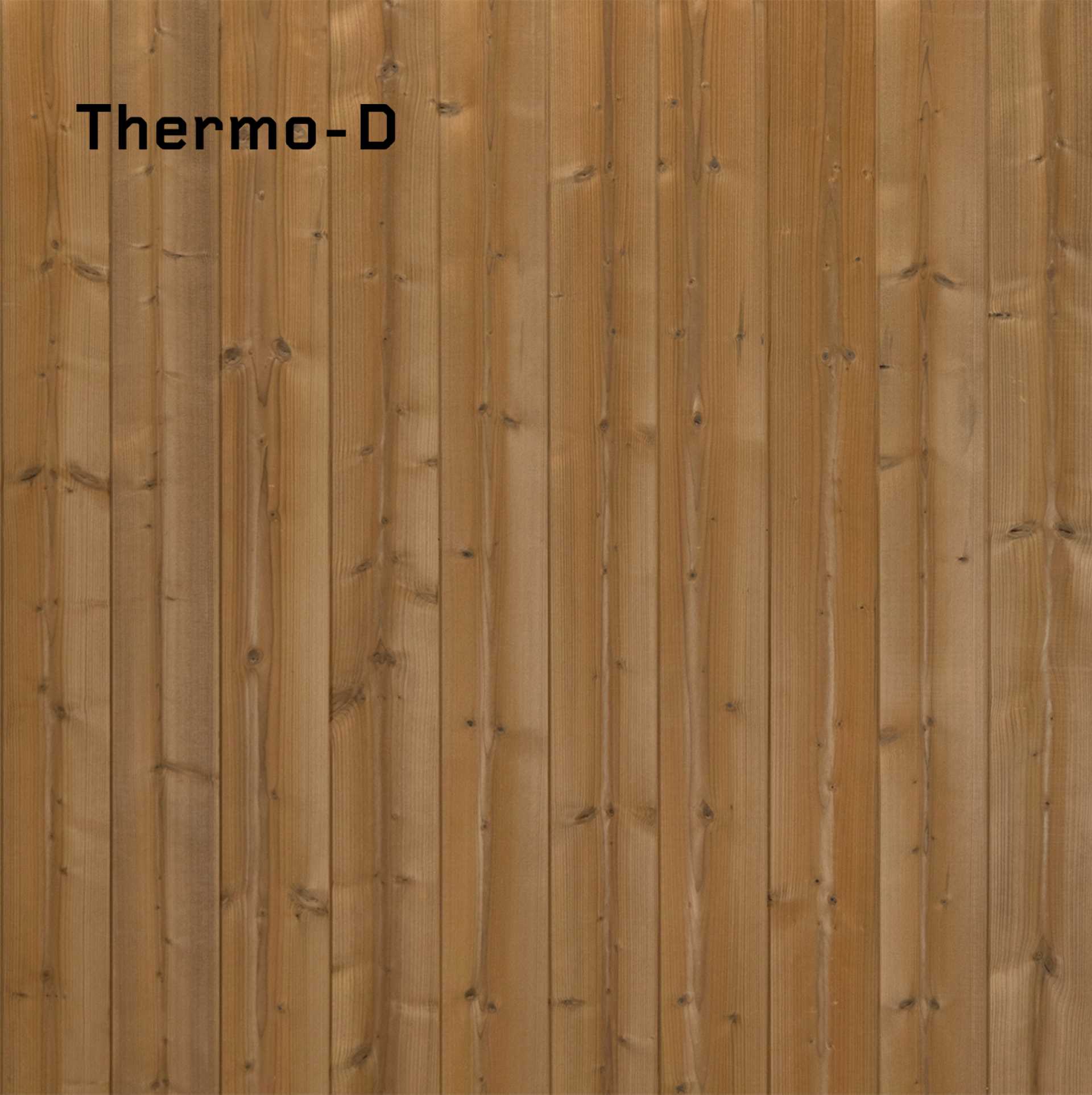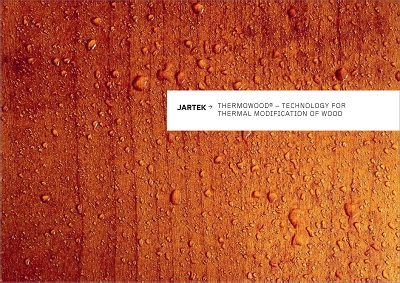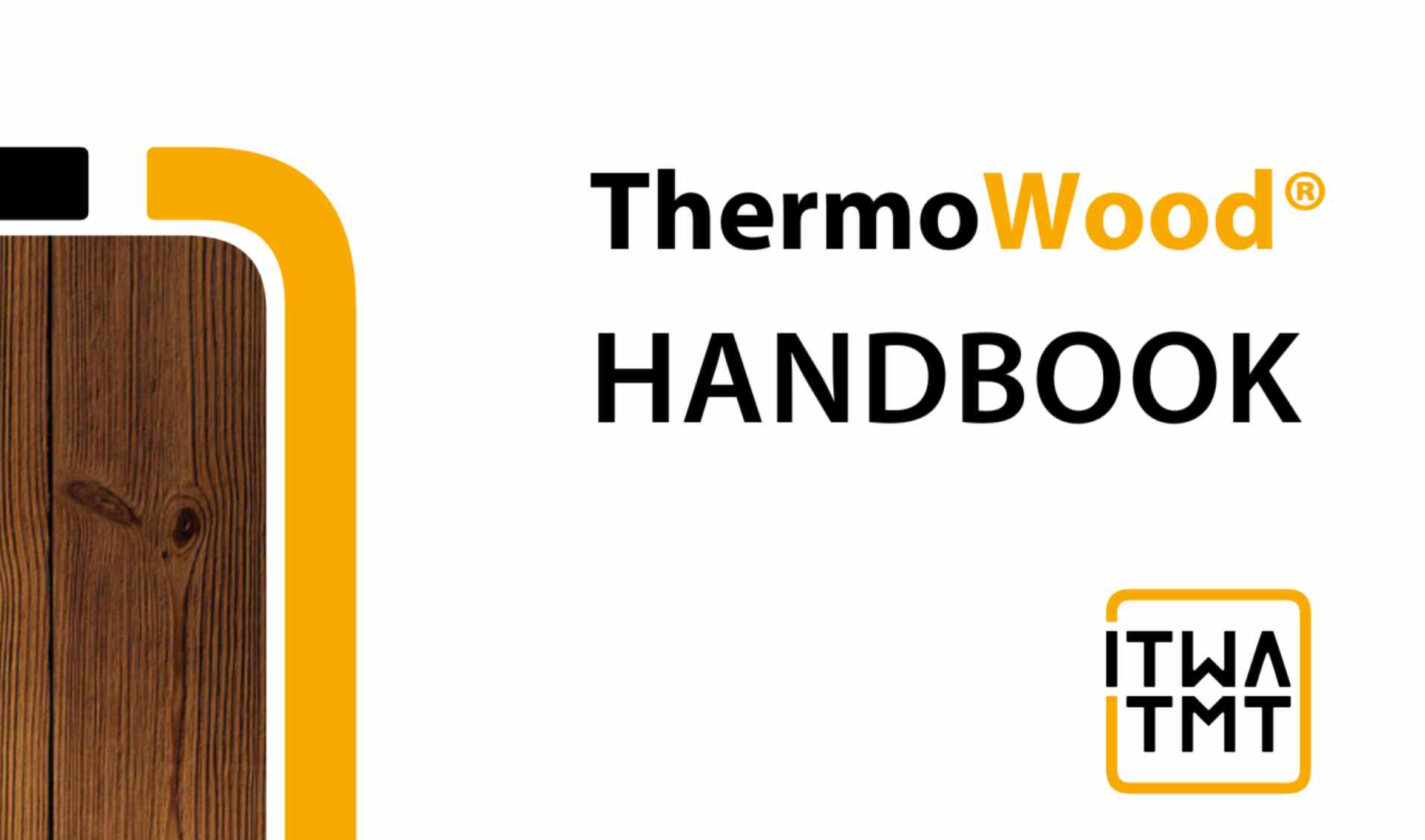
ThermoWood® process and properties
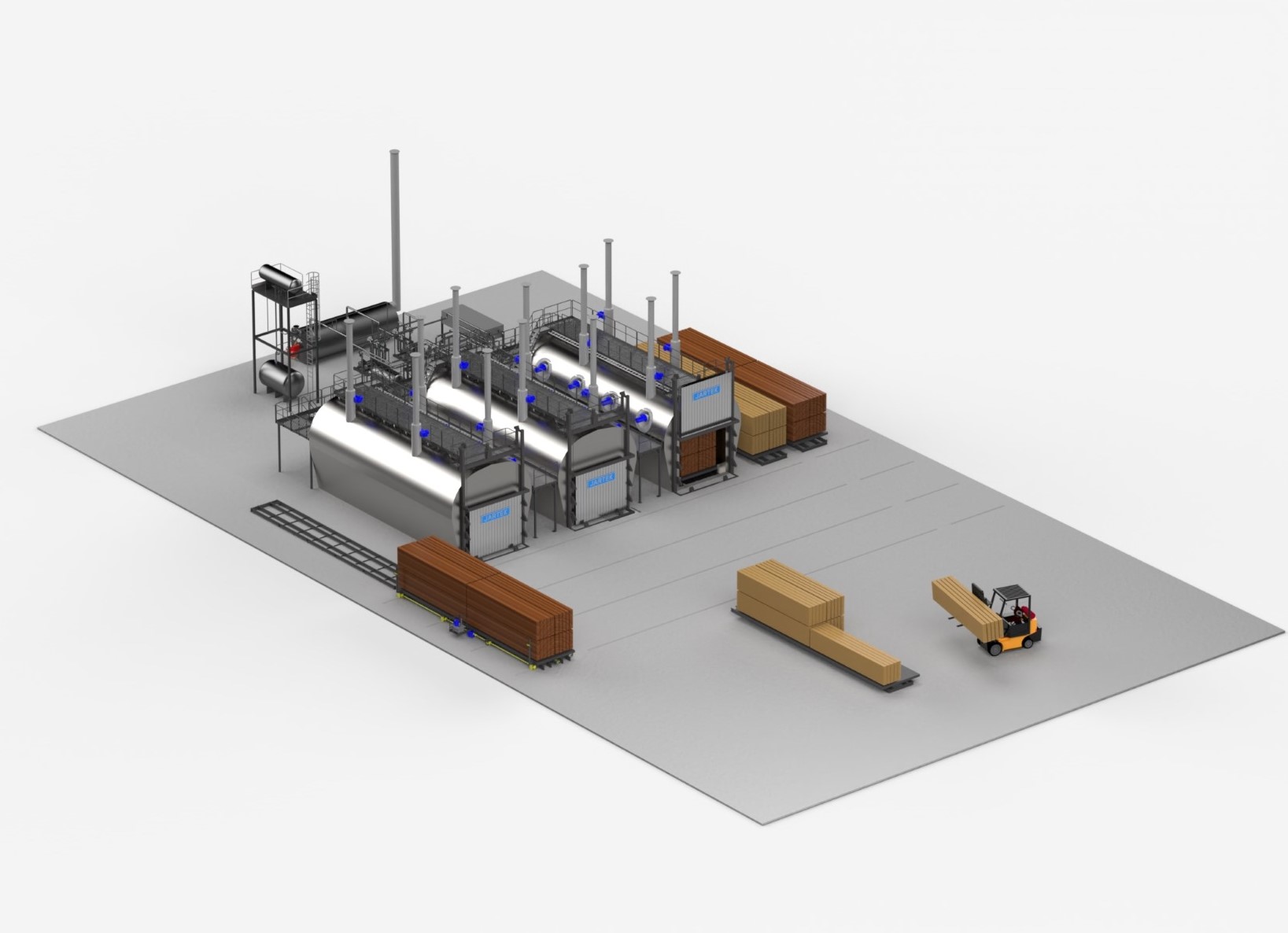
The ThermoWood® process includes two levels of treatment: Thermo-D (durability) and Thermo-S (stability). The difference between these processing stages lies in the processing temperature. The different stages affect the properties of the thermally modified wood:
- The Thermo-D process focuses on durability. Thermo-D also results in a darker color.
- Thermo-S process aims to reduce moisture absorption and improve dimensional stability.
Only heat, steam, and water are used during the process. No chemicals are added to the wood. The process can be divided into three stages:
- Raising the temperature: The temperature of the wood is quickly raised to about 100 °C (212 °F), followed by a slower increase to about 130-140 °C (266-284 °F). During this stage, the moisture content of the wood drops to near zero.
- Actual thermal modifying: The temperature is raised to 185-220 °C (365-428 °F), depending on the degree of treatment, and then maintained for 2-3 hours. As heating continues and water is removed, the chemical composition of the wood begins to change under the influence of heat, with significant changes occurring in the hemicellulose of the wood.
- Temperature drop and humidity equalization: The temperature is lowered by water spraying. The wood's moisture content is equalized according to the application, usually to more than 5%.
Read more on International ThermoWood Association website
Benefits of Thermal Modification
Thermal modification improves the properties of wood, including:
- Reduced moisture absorption
- Improved dimensional stability
- Enhanced rot and weather resistance
- Removal of resin from coniferous trees
- Staining of the wood throughout its thickness, darkening to various shades of brown depending on the temperature
These changes improve usability by:
- Preventing dimensional changes in exterior cladding boards due to air humidity
- Maintaining such low humidity in thermally modified wood that decay fungi cannot function, even at high relative humidity
- Eliminating resin leakage from coniferous wood through painted surfaces
- Simple
- easy to maintain
- Reliable


